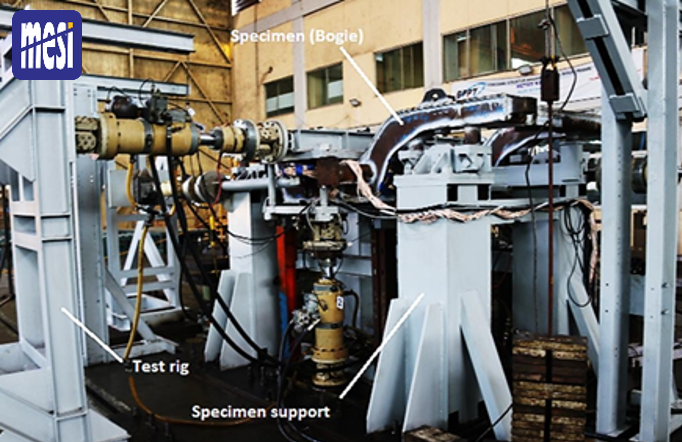Verification of urban light rail transit (LRT) bogie frame structure design lifetime under variable fatigue loads
Main Article Content
Abstract
The bogie frame is the main structure of the train that supports the train's loads during its operation. These structures are subject to fatigue testing to ensure their design life is up to the required standards. The urban light rail transit (LRT) bogie frame used in the Greater Jakarta area is newly designed and manufactured by a commercial railway rolling stock manufacturer. The design lifetime of this newly designed bogie frame structure under various fatigue load conditions is verified experimentally by fatigue testing. Testing and evaluations were conducted following the EN 13749 standard and VDV recommendation. The fatigue test of the urban LRT bogie frame structure was carried out in the test hall of the BPPT Structural Strength Technology Center (B2TKS) using a combination of seven loadings. The bogie frame was subjected to two variable types of fatigue loads, namely driving in curves and passing points (switches), with 2,000,000 cycles, 4,000,000 cycles, and 6,000,000 cycles of fatigue loadings. The parameter measured on the bogie frame structure is the strain value during the test using a dynamic data logger. The stress values analyzed are the average stress and the stress amplitude and then plotted on the maximum and minimum stress curve. The bogie structure is inspected by the non-destructive test method in all areas of its welded joints. This inspection is carried out before and after the test to ensure whether there are cracks caused by fatigue loads. The results of the fatigue test on the bogie structure under the variable fatigue load conditions show that the maximum stress value of 91.71 MPa at 1,500,000 cycles, that occurs during the test, does not exceed the fatigue limit of the material, and there are no cracks in the structure after the test is carried out for up to 6,000,000 cycles.
Downloads
Article Details

This work is licensed under a Creative Commons Attribution-NonCommercial 4.0 International License.

